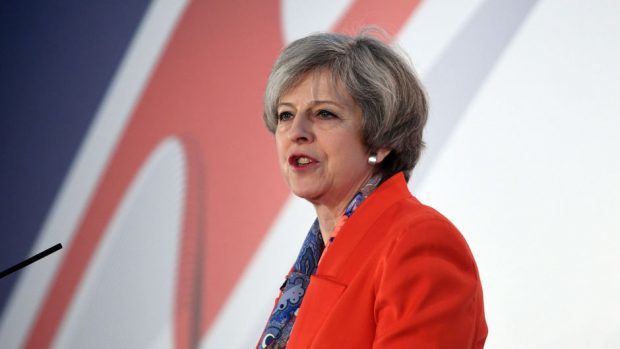The relationship between Theresa May and Nicola Sturgeon showed no signs of thawing last night after it emerged Scottish ministers were left in the dark about the start date for Brexit negotiations.
Downing Street confirmed yesterday that the prime minister will formally trigger EU withdrawal talks on March 29.
The news was conveyed to the office of European Council President Donald Tusk by Britain’s ambassador to the EU Sir Tim Barrow.
And Number 10 subsequently informed journalists at a Westminster briefing.
But it quickly materialised that the Scottish Government was not told about the plans before they were publicly announced.
Pushed to clarify whether notification had been given, the prime minister’s official spokesman said: “We are informing you all essentially now.”
Asked whether Ms Sturgeon had received a phone call, he added: “We don’t get into precise details of every conversation which we have.”
The spokesman also refused to confirm whether the formal Article 50 notification letter would be shared or discussed with the devolved governments before it is issued next week.
He said he would not go into details in advance, adding: “There will be more opportunities for discussion with the devolved administrations between now and Article 50 being triggered.”
Scotland’s Brexit Minister Mike Russell, involved throughout the process via the joint ministerial committee (JMC), complained furiously that he had only heard the news from the media and that the UK Government had “somehow forgot to inform us”.
A spokesman for Scotland’s first minister added: “The fact the UK Government failed to properly and fully inform all of the devolved administrations on the plans for triggering Article 50 speaks volumes – and totally exposes as empty rhetoric Westminster’s language about equal partnership.”
But a UK Government source described the step as “advance notification of the notification”.
A spokesman added: “The UK has not yet invoked Article 50. We have always said we intended to do so before the end of March.
“All that has happened is we have confirmed the precise date on which we intend to invoke in response to mounting speculation.
“We are determined to negotiate for an outcome that works for every nation and region of the UK.”
Mrs May, who confirmed she had discussed the matter with Welsh first minister Carwyn Jones during her visit to Swansea,
added: “I have always said it would be before the end of March and we will continue talking to them (the devolved administrations).”
The row blew up amid increasing tension between Edinburgh and London after Ms Sturgeon announced plans to seek to hold a second independence referendum.
While the UK as a whole backed the country’s departure from the EU last year, 62% of voters north of the border wanted to remain.
SNP ministers insist the result provides a “cast-iron mandate” for another poll, given the party’s manifesto for the 2016 Scottish Parliament elections.
A majority of MSPs are expected to back the call at the end of a Holyrood debate tomorrow.
This would pave the way for a formal request for a Section 30 order, the legal mechanism allowing an independence vote to be called.
But the UK Government confirmed last week one would not be granted, with Mrs May insisting “now is not the time”.
Once the Article 50 correspondence is provided to the European Council, it will set in train a two-year negotiation process expected to lead the UK out of the EU on March 29, 2019.
Mr Tusk confirmed that he will present draft Brexit guidelines to the remaining 27 member states within 48 hours of notification.
They are then expected to stage an extraordinary summit within four to six weeks to agree a mandate for European Commission chief negotiator Michel Barnier, with talks probably beginning in earnest in May or June.
